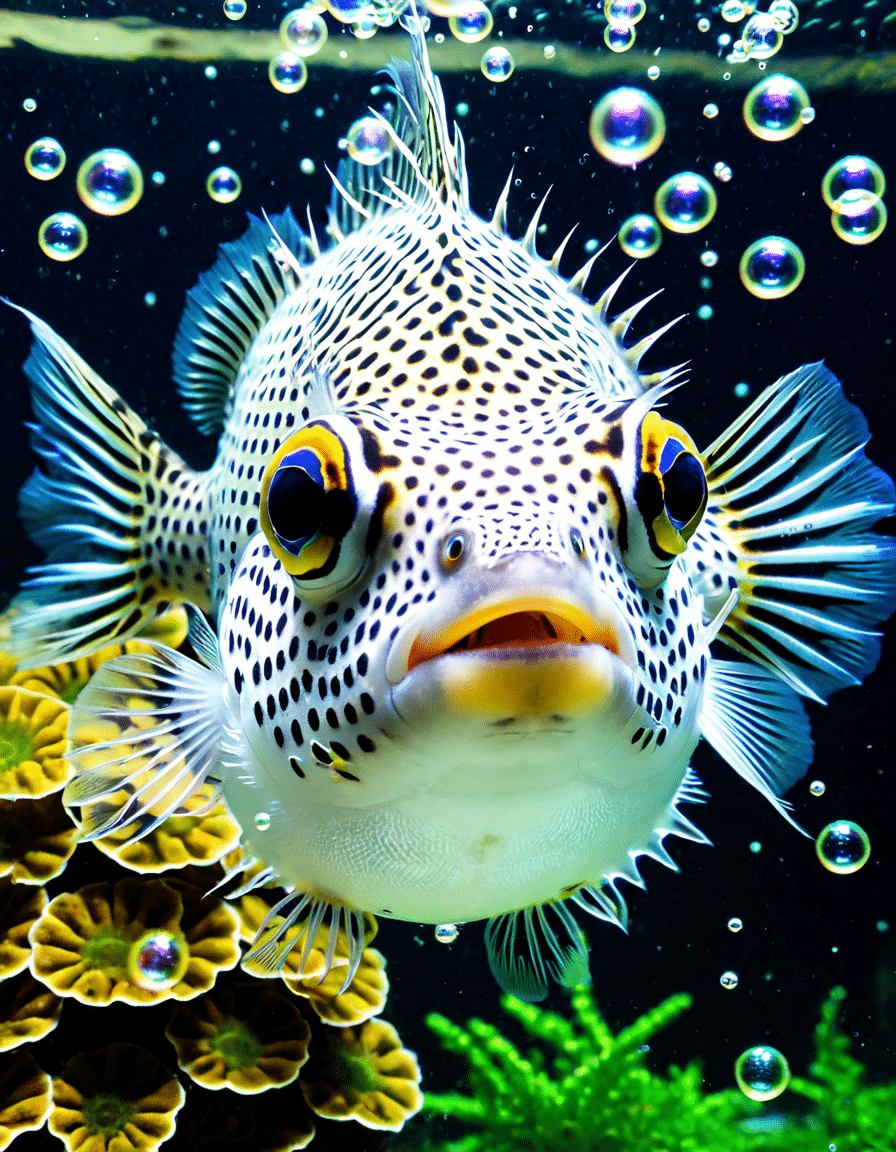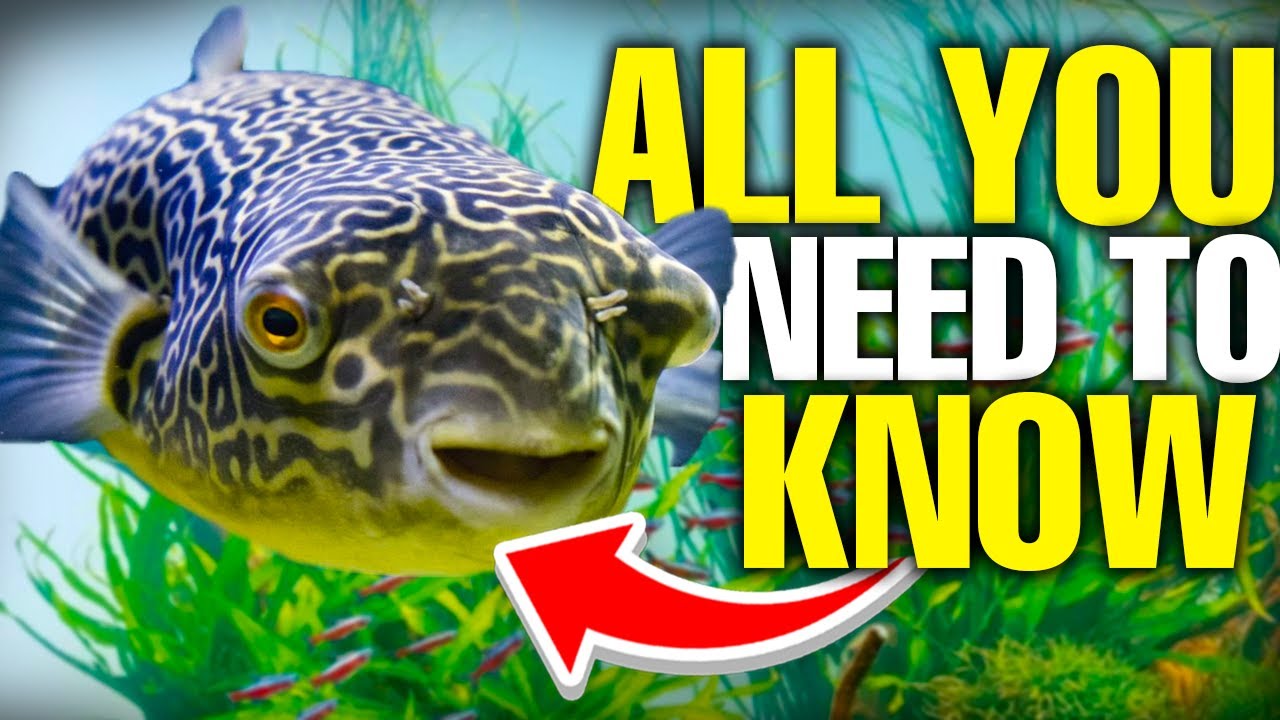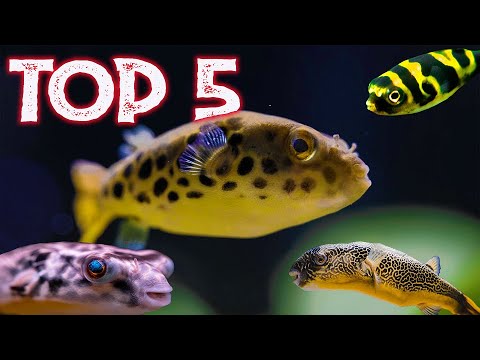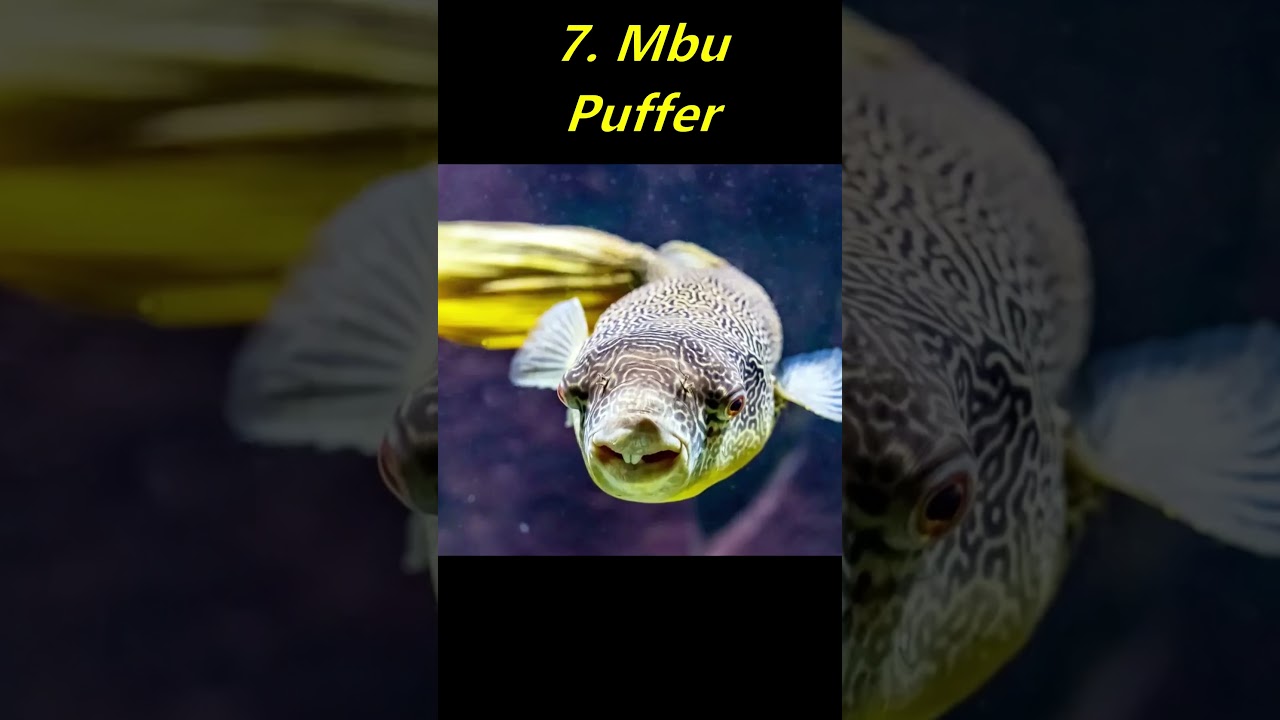Fresh water puffer fish, affectionately known as Tetraodon, charm both novice and seasoned aquarium enthusiasts alike. Their vibrant hues and captivating personalities set them apart from the typical freshwater tank fish. Not only do these fascinating creatures exhibit curious behaviors, but their ability to puff up when they feel threatened adds an extra layer of intrigue. Whether you’re a pet owner or an aquarist, exploring the world of fresh water puffer fish will surely breathe new life into your aquarium!
The Unique Appeal of Fresh Water Puffer Fish
Many people are drawn to fresh water puffer fish because of their extraordinary characteristics. They often display a range of colors, from bright greens to deep blues, interspersed with eye-catching patterns. The way they puff up their bodies serves as a fascinating defence mechanism; it’s a behavior that can easily mesmerize viewers.
Maintaining fresh water puffer fish isn’t without its complexities. They require specific tank conditions and unique diets, unlike your average pet fish. Still, for those who enjoy a rewarding challenge, these fish offer a sense of fulfillment and beauty that few other freshwater species can match.
Adding fresh water puffer fish to your home aquarium isn’t just an exercise in aesthetics; it’s also an educational venture. Observing their interactions, feeding habits, and even their personalities can deepen your understanding of aquatic ecosystems. Plus, if you find joy in nurturing your pets, these puffers will undoubtedly hold your attention!
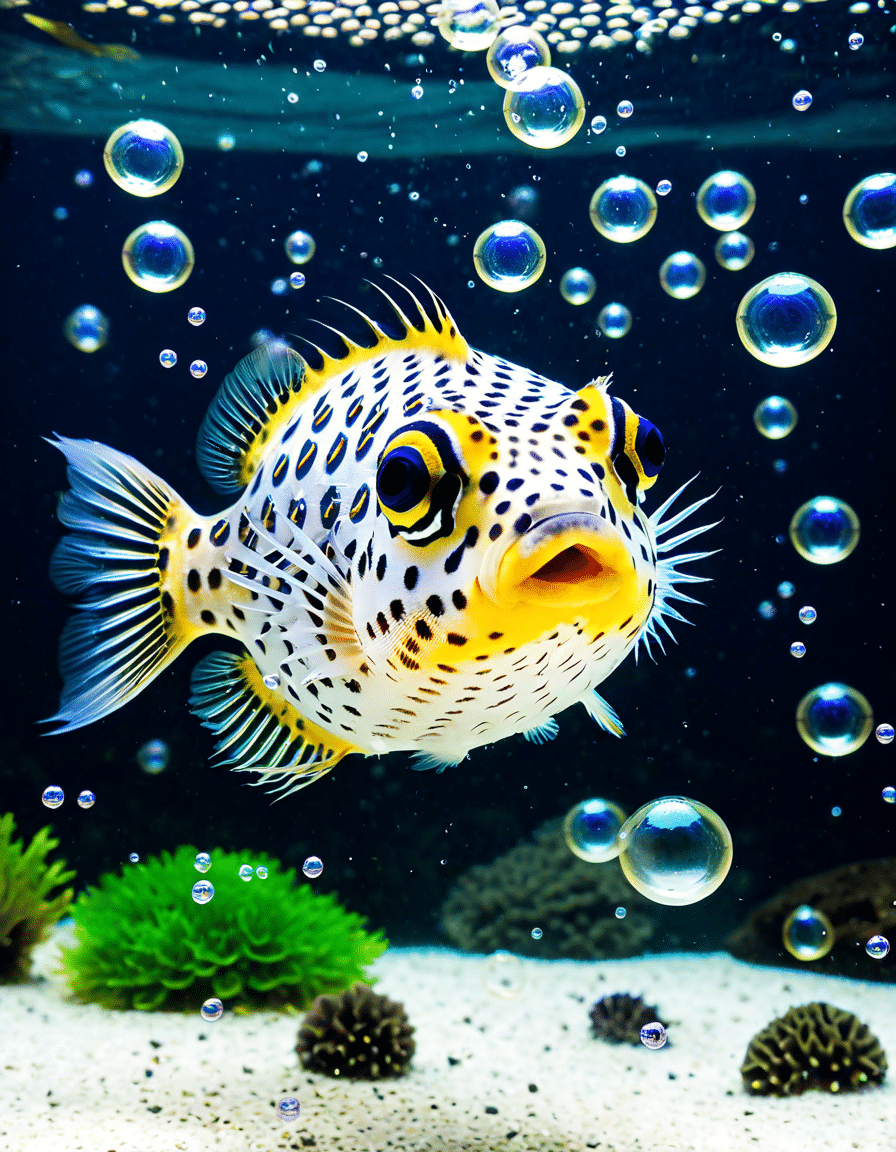
Top 5 Freshwater Puffer Fish Species to Consider for Your Aquarium
When looking to set up a fresh water puffer fish tank, it’s essential to remember that not all species are created equal. Here’s a list of five popular varieties that are perfect for your aquarium:
1. Pea Puffer (Carinotetraodon travancoricus)
The Pea Puffer is a crowd favorite, typically growing to about 1-2 inches in length. Its bright green body, flecked with enticing yellow spots, makes it a captivating addition to smaller tanks. As a mainly insectivorous fish, you’ll have a delightful challenge preparing food for fish like live daphnia and small snails.
2. Spotted Puffer (Tetraodon cutcutia)
Next up is the Spotted Puffer, which grows larger at 4-6 inches. This species is easily characterized by its distinctive spotted body. Keep them in community tanks with compatible species and feed them a protein-rich diet that includes snails and shrimp to keep them happy and healthy!
3. Mbu Puffer (Tetraodon mbu)
The Mbu Puffer is an eye-catching addition, reaching lengths of up to 12 inches. Known for their playful demeanor, these fish require a varied diet that comprises both live food and specialized pellets. They adapt quite well to moderate water conditions, making them less intimidating for beginners.
4. Fahaka Puffer (Tetraodon fahaka)
The Fahaka Puffer is a large specimen, potentially growing up to 14 inches. They stand out with their colorful patterns and strong personalities! Their diet needs to include hard-shelled foods to help wear down their continuously growing teeth—something to keep in mind when selecting food for fish.
5. Red Eye Puffer (Tetraodon species)
Although lesser-known, the Red Eye Puffer brings a unique twist with its striking red eyes and shimmering silver body. Measuring about 3-5 inches, these fish require a careful diet rich in live foods and high-quality pellets. They thrive in a diverse tank, particularly if it includes plenty of places to hide.
Essential Care for Fresh Water Puffer Fish: What You Need to Know
Caring for fresh water puffer fish can be quite different from keeping typical freshwater tank fish. Here’s what you should consider:
Tank Conditions
To create a suitable environment, it’s crucial to have a well-planted aquarium with efficient filtration. A minimum tank size of 20 gallons works well for smaller species like the Pea Puffer, while larger puffers like the Fahaka need at least 50 gallons. Maintain a water temperature between 75-80°F with slightly acidic pH levels, reflecting their natural habitats.
Food for Fish: Best Practices
These puffer fish thrive on a varied diet that reflects their foraging habits in the wild. Ideal food for fish includes live snails, crustaceans, and high-quality pellets. Keep an eye on portion sizes, as overfeeding can lead to obesity, which can seriously affect their health.
Compatibility and Socialization
When it comes to tank mates, approach carefully. Many freshwater puffer fish lean towards solitary behavior or can be quite aggressive. Slow-moving or smaller species may become targets while larger tetras or barbs usually coexist successfully with puffers.
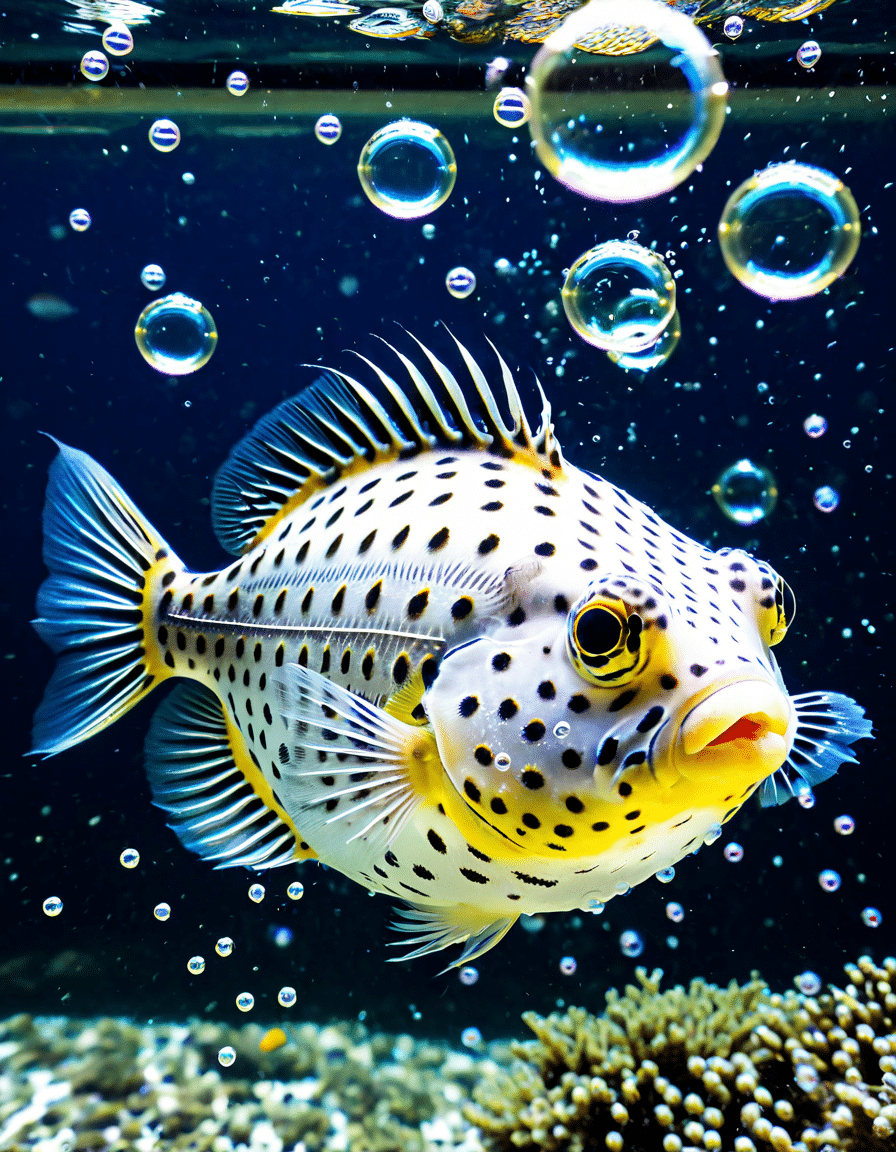
Common Misconceptions About Fresh Water Puffer Fish
Even though fresh water puffer fish enjoy a solid fanbase, certain myths persist:
1. “They’re Easy to Care For”
Many newcomers to the aquarium world mistakenly believe that these puffer fish are low-maintenance. On the contrary, their special diets and tank requirements make them less suitable for beginners.
2. “They Are Community Fish”
While some individuals might coexist amicably, research is vital to understand each type before placing them in a community tank. Many puffer varieties can show territorial tendencies and act aggressively towards other fish.
3. “They’re Only for Experienced Aquarists”
Even though fresh water puffer fish demand more care than your average fish, newbies can absolutely succeed with the right research and setup. With proper preparation and knowledge, you too can create a thriving environment for these captivating creatures!
The Living Art of Keeping Fresh Water Puffer Fish
Owning fresh water puffer fish transcends simple fish-keeping; it’s like cultivating a living artwork within your home. Their stunning colors and engaging behaviors provide a window into aquatic life. Successfully maintaining a puffer fish aquarium not only showcases these amazing animals but also enriches your understanding of their delicate ecosystems.
So, if you’re intrigued by the thought of exploring the vibrant undercurrents that fresh water puffer fish introduce, don’t hesitate! The world of aquarium keeping is full of surprises, and with a bit of dedication, you can create your own aquatic paradise. Be sure to check out guides like Are Chrysanthemums poisonous To Cats for more pet care insights.
In summary, the fresh water puffer fish continues to hold a special place in the hearts of pet owners everywhere. With the right knowledge and prep, you can turn your aquarium into a mesmerizing aquatic scene, one puffer at a time!
If you have any questions about pet care, product reviews, or pet health news, remember to check out the latest articles on Pets Dig!
Fresh Water Puffer Fish: The Enigmatic and Colorful Wonder
Fascinating Features of Fresh Water Puffer Fish
Fresh water puffer fish are not your average aquarium residents; they come with a personality and charisma all their own! These little gems can puff up to three times their original size when threatened, a quirky defense mechanism that leaves many fish enthusiasts scratching their heads. This unique ability reminds us a bit of characters like Mad Dog russo, who are larger than life. Interestingly, their diet requires more attention than some other fish. These puffers typically munch on hard-shelled foods like snails and crustaceans to keep their beaks from overgrowing – much like how some of us might need a good dentist visit!
Isn’t it intriguing to think about how much you need to take care of these captivating creatures? According to Doctor Stevie, an expert in pet care, fresh water puffer fish can live quite a long time if properly cared for—sometimes over a decade! However, they do require the right tank mates to thrive, which can be a tricky business when considering compatibility. Therefore, it’s worth checking out if your current setup can accommodate a fresh water puffer fish without stirring up trouble among other tank mates!
Curious Conflicts with Fresh Water Puffer Fish
Speaking of tank mates, did you know that fresh water puffer fish can be quite territorial? They often don’t play well with others, which can lead to conflicts reminiscent of a no passing zone sign. Understanding their temperament can help keep peace in your aquatic haven! And while you’re at it, it’s a good idea to ensure everyone’s financial health when you’re considering setting up this captivating aquarium. Resources like do Vets do payment Plans? can provide helpful insights to manage costs associated with pet care.
Additionally, fresh water puffer fish have been a popular choice for aquarists for ages, not unlike actors like Jonathan Sadowski who capture hearts on screen. And just as you’d write a great script or perhaps a letter Of interest template for a potential project, doting on details like water quality and habitat can create a better environment for your puffer.
Joys and Challenges of Puffer Care
It’s no secret that caring for fresh water puffer fish comes with its share of joys and challenges. On one hand, watching them bloom in vibrant colors and exhibit curious behaviors can be incredibly rewarding. On the flip side, enthusiasts might face health issues that require attention, such as a common condition similar to a guppy deflated swim bladder. Not to worry! Regular check-ups and understanding their specific needs can help you avoid any sudden surprises.
With the right approach, you can turn your home aquarium into a stunning visual testament to the wonder of fresh water puffer fish. By paying close attention to their environment and being proactive about their health and diet, you’re sure to enhance both their lives and yours. Who knew keeping a fish could be as engaging as nurturing your own pet companion?
